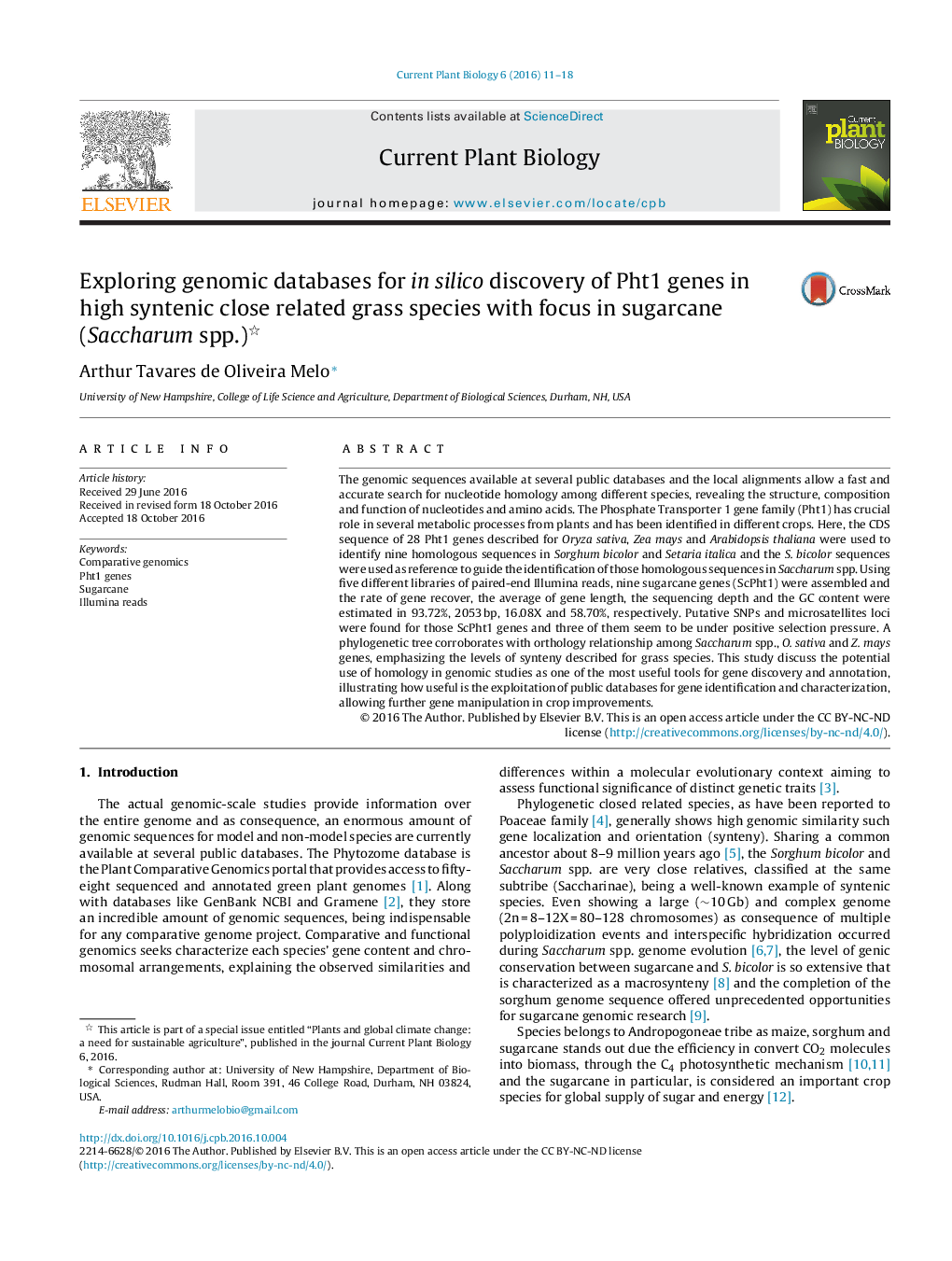| Article ID | Journal | Published Year | Pages | File Type |
|---|---|---|---|---|
| 4978479 | Current Plant Biology | 2016 | 8 Pages |
The genomic sequences available at several public databases and the local alignments allow a fast and accurate search for nucleotide homology among different species, revealing the structure, composition and function of nucleotides and amino acids. The Phosphate Transporter 1 gene family (Pht1) has crucial role in several metabolic processes from plants and has been identified in different crops. Here, the CDS sequence of 28 Pht1 genes described for Oryza sativa, Zea mays and Arabidopsis thaliana were used to identify nine homologous sequences in Sorghum bicolor and Setaria italica and the S. bicolor sequences were used as reference to guide the identification of those homologous sequences in Saccharum spp. Using five different libraries of paired-end Illumina reads, nine sugarcane genes (ScPht1) were assembled and the rate of gene recover, the average of gene length, the sequencing depth and the GC content were estimated in 93.72%, 2053Â bp, 16.08X and 58.70%, respectively. Putative SNPs and microsatellites loci were found for those ScPht1 genes and three of them seem to be under positive selection pressure. A phylogenetic tree corroborates with orthology relationship among Saccharum spp., O. sativa and Z. mays genes, emphasizing the levels of synteny described for grass species. This study discuss the potential use of homology in genomic studies as one of the most useful tools for gene discovery and annotation, illustrating how useful is the exploitation of public databases for gene identification and characterization, allowing further gene manipulation in crop improvements.
